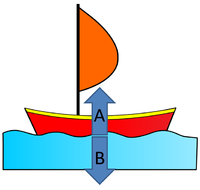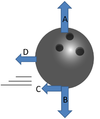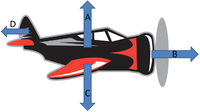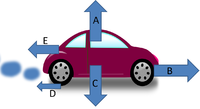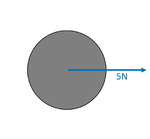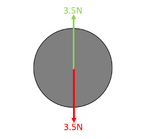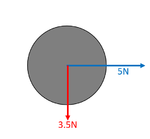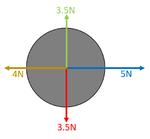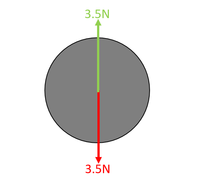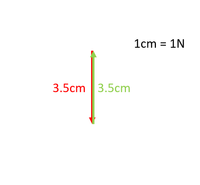Key Stage 2
Meaning
A force is something which can make an object; speed up, slow down or change shape.
- Noun: Force
About Forces
- A force can make an object speed up. When you let go of a pencil it will fall because a force called weight is making it speed up.
- A force can make an object slow down. When you roll a ball on the carpet it will slow down and stop because a force called friction has slowed it down.
- A force can change the shape of an object. When you tip a spoon of honey the honey will change shape and stretch because a force called weight pulls it into a long shape before dripping.
Key Stage 3
Meaning
A force is an influence that can change the speed, direction of motion or shape of an object.
About Forces
- The scientific units of force is the Newton (N). However, force can also be measured in pounds (lb) and ounces (Oz).
- Forces can be measured using a Newton Meter.
- Forces can be split into two groups, Contact Forces and Non-contact Forces.
- Forces can cause an object to accelerate.
- A pair of opposing forces can twist, stretch or squash an object. This is known as deformation.
Force Arrows
- Forces can be represented in a diagram with arrows that show the magnitude and direction of the force. A bigger arrow means a bigger force.
Key Stage 4
Meaning
A force is a vector quantity can affect the speed, direction of motion or shape of an object.
About Forces
- The SI Unit of force is the Newton (N).
- A force can be measured using a Newton Meter.
- Forces follow Newton's Third Law which states that if an object 'A' exerts a force on object 'B'; then object 'B' will exert a force on object 'A' which is equal in magnitude but opposite in direction to the original force. These are sometimes called an action force and a reaction force. This means:
- When you push a wall with a force of 5N (Action Force), the wall pushes back with a force of 5N (Reaction Force).
- If 'head' a football with a force of 10N then your head provides a force of 10N (Action Force) to the ball and the ball provides a force of 10N to your head (Reaction Force).
- Forces can cause an object to accelerate.
- A pair of opposing forces applied to different parts of an object can twist, stretch or squash the object. This is known as deformation.
Forces as Vectors
- Forces have both magnitude and direction so they are considered vectors.
Forces on a Free Body Diagram
- To show force vectors a Free Body Diagram can be used, this indicates the magnitude and direction of the forces.
Forces on a Scale Diagram
- Forces can be added using a scale diagram.
|
|
|
| colspan= "2"|The two vector forces drawn to a 'scale' on a Scale Diagram. This scale is 1N = 1cm. The two forces can be added by placing the start of one vector force at the end of the other. This Scale Diagram shows that the two arrows add to make a length of 6.1cm, which represents 6.1N, in a direction of 35° down from the horizontal.
|
